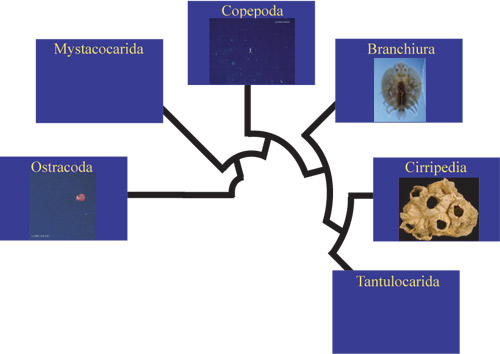
Maxillopods are generally small animals with barnacles being the exception to this rule. They commonly have shortened bodies, with a reduced abdomen that typically lacks appendages. It has been suggested that the ancestor common to all maxillopods developed sexual maturity before it had completely metamorphosed into the adult form. If this hypothesis is correct, it would explain the small size, shortened body plan and reduced number of appendages typically found in Maxillopoda.
Ostracods, copepods and barnacles are the most abundant and diverse groups within the Maxillopoda. Ostracods and barnacles have substantial fossil records. Mystacocarida are tiny worm-like crustaceans. Branchiura and Tantulocarida are both tiny ectoparasitic crustacean groups.
Choose from the cladogram below to begin exploring theis diverse group of crustaceans. As are many groups, the classification of the Maxillopoda is controversial so here we give a generally accepted phylogeny that is subject to change as the groups are studied further.

